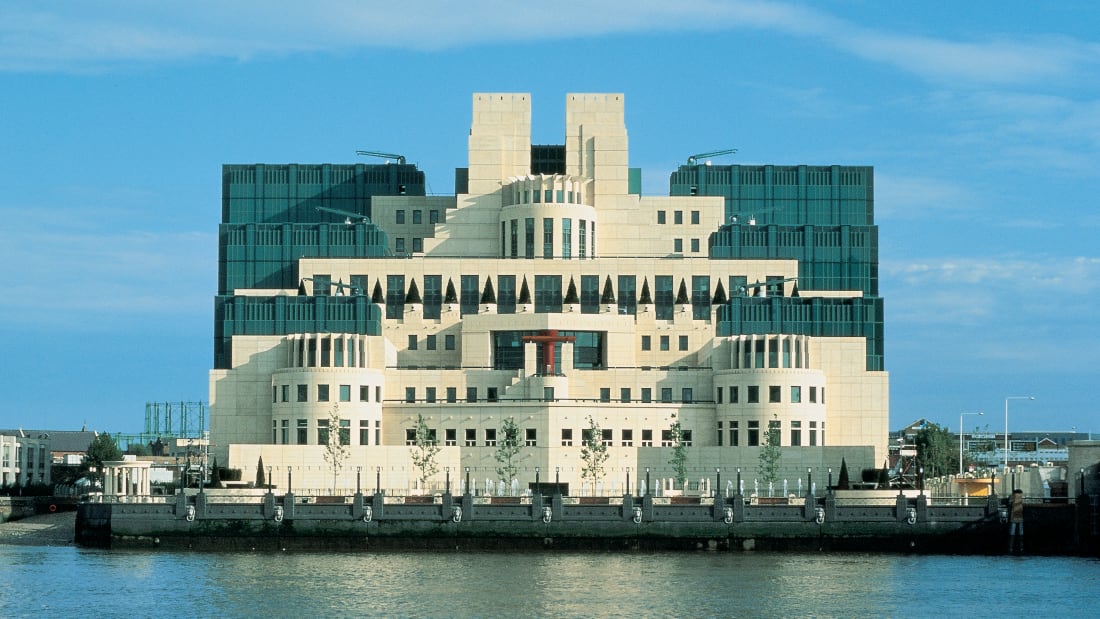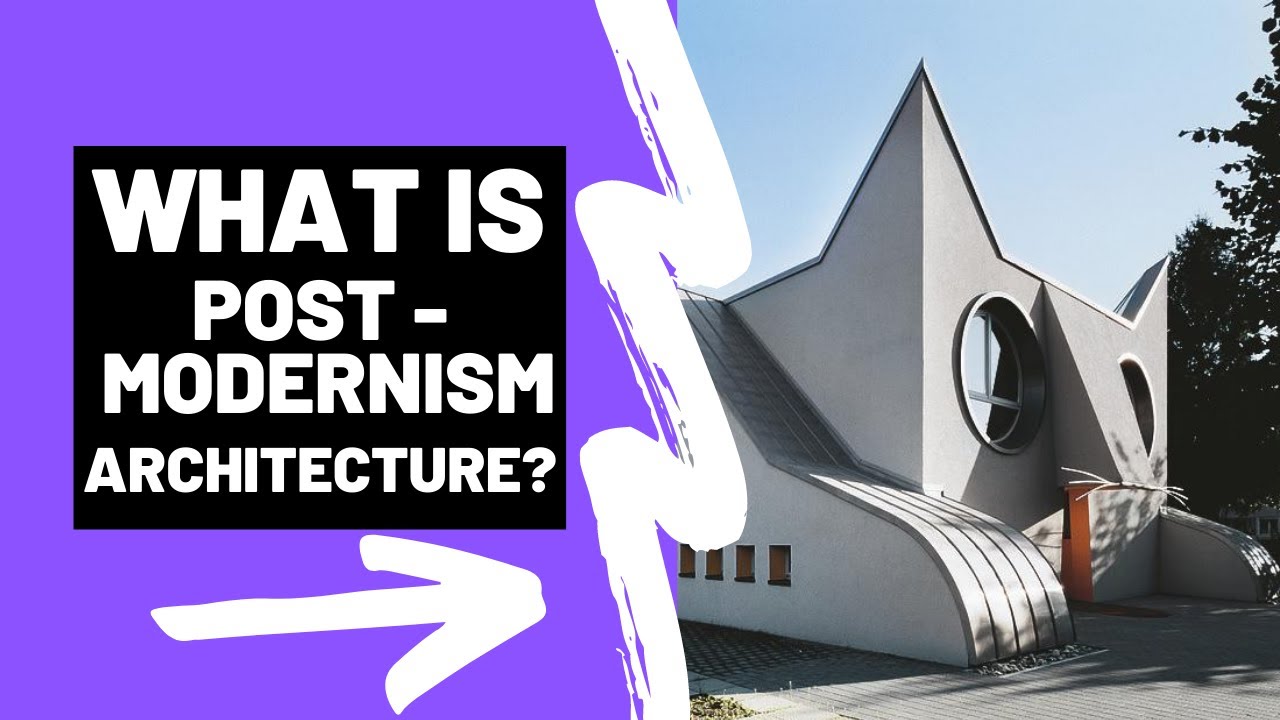Postmodern Architecture - A Rejection Of Modernism
Postmodern architecture is a style that came about at the end of the 20th century as a reaction against the strict, functionalist style of modernism. Postmodernism is a style that celebrates diversity, eclecticism, and individuality. Its designs often use historical references and playful elements.
Author:George EvansApr 04, 2023102.7K Shares1.4M Views

Postmodern architectureis a style that emerged in the late 20th century as a reaction against the strict, functionalist approach of modernism. Postmodernism celebrates diversity, eclecticism, and individualism, and it often incorporates historical references and playful elements in its design.
Postmodern architects rejected the idea that form follows function and embraced the notion that architecture can be expressive and fun.
They also questioned the modernist belief that progress and technology would solve all of society's problems, instead recognizing the need for a more nuanced and socially conscious approach to design.
Origins Of Postmodern Architecture
The roots of postmodern architecture can be traced back to the 1960s, when architects began to question the rigid formalism and functionalism of modernist architecture.
They rejected the notion that buildings should be designed solely for practical purposes, and instead sought to create structures that were more expressive and humanistic.
One of the key figures in the development of postmodern architecture was architect Robert Venturi.
In his seminal book "Complexity and Contradiction in Architecture," Venturi argued that buildings should be designed to communicate meaning and symbolism, rather than simply serving functional purposes.
He advocated for the use of historical styles and ornamentation in architecture, which he believed could help create a sense of place and cultural identity.

What is POSTMODERNISM ARCHITECTURE - A Brief Summary
Key Features Of Postmodern Architecture
Postmodern architecture is characterized by a number of key features, including:
- Eclecticism- Postmodern buildings often incorporate a variety of historical styles and decorative elements, ranging from classical columns to Gothic arches.
- Irony - Postmodern architecture frequently incorporates elements of humor and irony, such as playful shapes or unexpected juxtapositions of materials.
- Contextualism- Postmodern buildings are often designed to respond to their surroundings, taking into account factors such as the building's historical context and the surrounding urban fabric.
- Ornamentation- Postmodern architects often use decorative elements and ornamentation to create a sense of visual interest and texture.
- Fragmentation- Postmodern buildings often have a fragmented appearance, with different elements and forms that appear to be disconnected or in conflict with each other.
Examples Of Postmodern Architecture
Some of the most iconic examples of postmodern architecture include:
- The Portland Building in Portland, Oregon, designed by Michael Graves in 1982.
- The Piazza d'Italia in New Orleans, designed by Charles Moore in 1978.
- The AT&T Building (now the Sony Tower) in New York City, designed by Philip Johnson and John Burgee in 1984.
- The Vanna Venturi House in Chestnut Hill, Pennsylvania, designed by Robert Venturi in 1962.
Criticisms Of Postmodern Architecture
Despite its popularity and influence, postmodern architecture has been criticized by some for its lack of coherence and emphasis on style over substance.
Critics have argued that postmodern buildings can be superficial and lack the intellectual rigor of modernist architecture.
Despite these criticisms, postmodern architecture remains an important and influential style that continues to shape the built environment today.
Its rejection of the strict formalism and functionalism of modernism has opened up new possibilities for architects to create buildings that are expressive, contextual, and humanistic.
While postmodern architecture has been criticized for its sometimes excessive use of ornamentation and historical references, its legacy continues to shape the way we think about and approach architecture today.
Whether in its playful use of color and pattern or its emphasis on context and community, postmodernism has left an indelible mark on the built environment, and it will continue to be an important part of architectural history for years to come.
Postmodern Architecture Vs Modern Architecture
Postmodern architecture emerged in the late 1970s as a reaction against the strict functionalism of modernism, which was dominant in the early to the mid-20th century. Here are some of the key differences between postmodern and modern architecture:
Design Approach
Modern architecture is characterized by its emphasis on clean lines, simplicity, and functionality. It often features a minimalistic design with an emphasis on form over ornamentation.
Postmodern architecture, on the other hand, embraces diversity, eclecticism, and individualism in its design. It often incorporates historical references, playful elements, and ornamental details.
Materiality
Modern architecture often makes use of new and innovative materials, such as steel and reinforced concrete. Postmodern architecture, by contrast, often incorporates a mix of traditional and modern materials, such as stone, brick, and glass.
Context
Modern architecture is often designed to be universal and applicable to any location or context. Postmodern architecture, by contrast, emphasizes the importance of context, history, and culture.
It often incorporates elements from the local vernacular architectureand seeks to create buildings that are responsive to their surroundings.
Philosophy
Modern architecture is often associated with a rational, scientific worldview, and a belief in progress through technology.
Postmodern architecture, by contrast, is more skeptical of these grand narratives and often embraces a more pluralistic, fragmented view of the world.
Overall, while both modern and postmodern architecture has had a significant impact on the built environment, they represent very different approaches to design, philosophy, and cultural context.
People Also Ask
How Did Postmodern Architecture Come About?
Postmodern architecture emerged in the late 1970s as a reaction against the strict functionalism of modernism. Architects and designers began to question the rigid dogma of modernism and sought to embrace diversity, eclecticism, and individualism in their work.
What Are The Defining Features Of Postmodern Architecture?
Postmodern architecture is characterized by its use of historical references, playful elements, and eclectic design. It often incorporates elements from different styles and eras and frequently includes bright colors, ornamental details, and asymmetrical forms.
Who Were Some Of The Key Figures In Postmodern Architecture?
Some of the most influential figures in postmodern architecture include Robert Venturi, Michael Graves, and Charles Moore. These architects were known for their rejection of modernist orthodoxy and their embrace of eclecticism, irony, and historical references in their work.
What Are Some Examples Of Postmodern Architecture?
Examples of postmodern architecture include the Portland Building in Portland, Oregon, the AT&T Building in New York City, and the Walt Disney Concert Hall in Los Angeles. These buildings all incorporate postmodern design elements such as bright colors, ornamental details, and historical references.
What Is The Legacy Of Postmodern Architecture?
The legacy of postmodern architecture is complex and multifaceted. While it has been criticized for its excessive use of ornamentation and historical references, it has also had a significant impact on the built environment, influencing everything from skyscrapers to suburban homes. Its emphasis on diversity, context, and community remains an important lesson for architects and designers today.
Final Thought
Postmodern architecture is a style that emerged in the late 20th century as a reaction against the strict functionalism of modernism.
It celebrates diversity, eclecticism, and individualism, and it often incorporates historical references and playful elements in its design.
Postmodern architecture has had a significant impact on the built environment, influencing everything from skyscrapers to suburban homes.
While its excessive use of ornamentation and historical references have been criticized, its legacy continues to shape the way we think about and approach architecture today.
As we continue to design and build the world around us, it is important to remember the lessons of postmodern architecture and the importance of embracing diversity, context, and community in our work.

George Evans
Author
George Anderson, an exceptional architectural designer, envisions and brings to life structures that transcend the realm of imagination. With an unwavering passion for design and an innate eye for detail, George seamlessly blends form and function, creating immersive spaces that inspire awe.
Driven by a deep appreciation for the interplay of space, light, and materials, George's innovative approach redefines the possibilities of architectural design. His visionary compositions leave an indelible mark, evoking a sense of wonder and transforming the built environment.
George Anderson's transformative designs and unwavering dedication continue to shape the architectural landscape, pushing the boundaries of what is possible and inspiring generations to come.
Latest Articles
Popular Articles